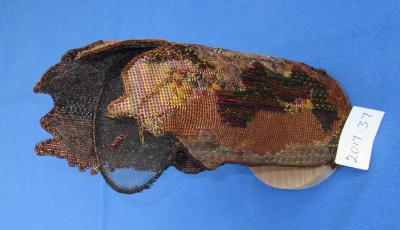WHITE WORK, SEGMENT
This delicate garment segment, possibly a sleeve, has been hand stitched in the technique of chikan embroidery known as chikankari a delicate whitework from India worked on a very fine semi-translucent cotton fabric.
There is an exquisite delicacy of detail, with a fixed repertoire of stitches, each with its own chikan name and with strict definitions of use, each of which is only ever used in a certain way – a discipline shared by no other embroidery. (European embroiderers used stitches for whatever purpose they pleased.) Stitches are similar to back stitch, satin, stem, chain, eyelet, pulled fabric stitches with designs of flowing scrolls with creepers, flowers and foliage.
It is similar to Ayrshire work resulting from an exchange of ideas during British rule.
The origins are uncertain. The word ‘chikan’ is derived from a Persian word meaning to render delicate patterns on fabric, dating back to the 16th C. So fine was chikankari that the Romans called them ‘textili venti’, woven winds.
Details
Details
Embroiderers' Guild of WA Textile Museum
Embroiderers' Guild of WA Textile Museum
More items like this
Other items from Embroiderers' Guild of WA Textile Museum
Scan this QR code to open this page on your phone ->

